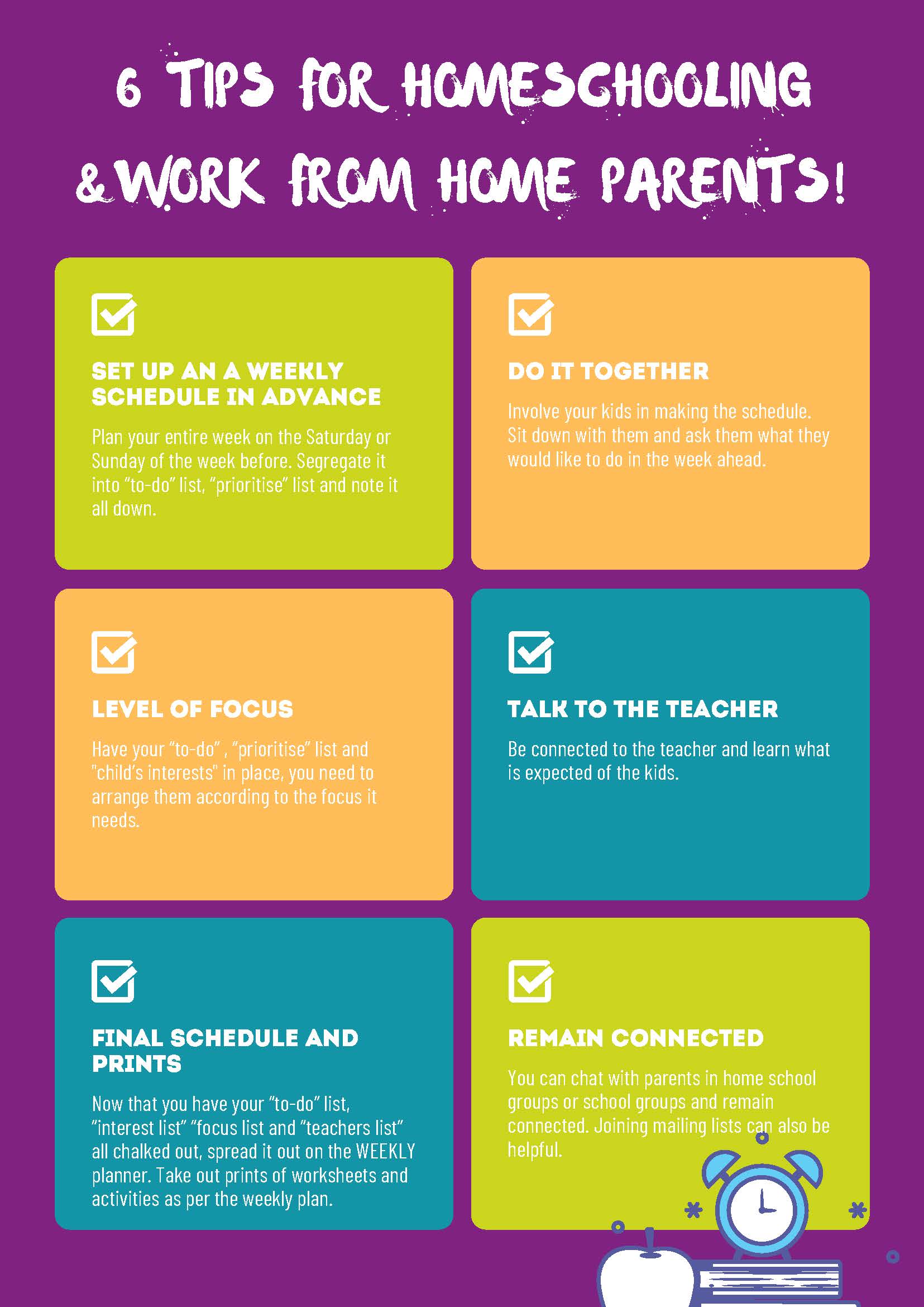Does your homeschooling feel disorganized? Do you feel that you are not getting any work done working from home? Are kids binge-watching or spending endless hours in front of the screens?
If the answer is “yes” to any of the above. Then you are in the right place.
A usual day used to be to wake up, get ready and race out of the door for school; but not nowadays. The new normal is stay-safe-at-home with kids. COVID pandemic has changed our lives a fair bit.
If you are working from home it can be a big challenge to get kids up and about. This is where scheduling becomes necessary. Structure in daily life is very important as it is not summer holidays for them to sleep in for long.
Hence a WEEKLY SCHEDULE is a must!
Kids may not go back to school for weeks or even months. Parents got to be creative, make checklists finish office work, housework and the list is endless. While shuffling between a full-time job and homeschooling kids it’s important to figure out how to do this thing right.
Don’t worry here are some tips to get you through this as smoothly as possible and create an environment where kids can thrive.
Here are 6 simple hacks that can get you started!
1. SET UP A WEEKLY SCHEDULE IN ADVANCE FOR HOMESCHOOLING (The “T0-do List”):
Plan your entire week on the Saturday or Sunday of the week before. You may be following a school curriculum or a self-paced program. Identify and number your child’s learning milestones from them and put them in a planner. Segregate it into a “to-do” list, “prioritize” list, and note it all down. If you want to get the tasks completed you have to pen them down and things will work out like magic! I have a ready-made “WEEKLY SCHEDULE” template for you, if you want it, simply download this and print it out.
DOWNLOAD THE “WEEKLY SCHEDULE PLANNER” HERE:
2. DO IT TOGETHER (The “Interest List”):
Involve your kids in making the schedule. Sit down with them and ask them what they would like to do in the week ahead. Understand their interests and note them down. Now match them to the learning goals. That way they will feel responsible and the schedule can be followed with much ease.
3. LEVEL OF FOCUS ( The “Focus List”):
Now that you have your “to-do”, “prioritize” list, and “child’s interests” in place, you need to arrange them according to the focus it needs. It is crucial to plan each day in the week, according to the level of focus and energy it needs. Understand which time works for your child. It can be reading or math early in the day and projects or activities post-launch that can be suitable for your child. Set up the timetable accordingly. If your child is engaged and self-driven on certain topics, schedule these topics during times where you can take a mental break or focus on your work.
4. TALK TO THE TEACHERS (The “Teacher’s List”):
Be connected to the teacher and learn what is expected of the kids. Check the WEEKLY SCHEDULE and see if it matches with the teacher’s learning plans and expectations. If you have your curriculum or self-paced program figure out what you need them to do in the week.
5. FINAL SCHEDULE AND PRINTS:
Now that you have your “to-do” list, “interest list” “focus list, and “teachers list” all chalked out, spread it out on the WEEKLY planner. You will see how easily things fall in place. If you are looking for some suggestions, here is a schedule from MONDAY TO SATURDAY that might just work for you. It fits into the next-generation curriculum standards and follows the engineering design process (EDP). Check out my video on “DAILY S.T.E.M PLANNER” to get hold of the ready-made plan. This worked amazingly well with my kids during their homeschooling and hope it does for you too.
Now that you have your entire week nicely chalked out, it’s time to keep things ready. Take out prints of worksheets and activities as per the weekly plan. If you need to download any apps or check links, keep them already.
6. REMAIN CONNECTED:
You can chat with parents in homeschooling groups or school groups and remain connected. Joining mailing lists can also be helpful. Times may be hard but you don’t have to go through it alone, remaining connected with other homeschoolers’ help.
Once you have the schedule ready, lesson plans, worksheets printed, apps downloaded, it will be much easier to get through the week and see amazing work being done. Remember the fun is in doing it together with kids. This helps your kids to be aware of the week ahead and at the same time have a great family time together.
A SECRET: Keep some time aside to connect with family outside over video chat or call. Remaining connected with the loved ones from far by having it in the schedule makes every day filled with love and support. Enjoy the wonderful gift of time to spend with a close family.
You can DOWNLOAD AND PRINT this TIP SHEET for yourself.
Home schooling is a new scenario for many as spoken about on Indiatoday too. So, if you feel overwhelmed, don’t be too hard on yourself and allow time to adjust.
If you liked this, share it with a friend who might find it helpful. Wishing you all the best!




